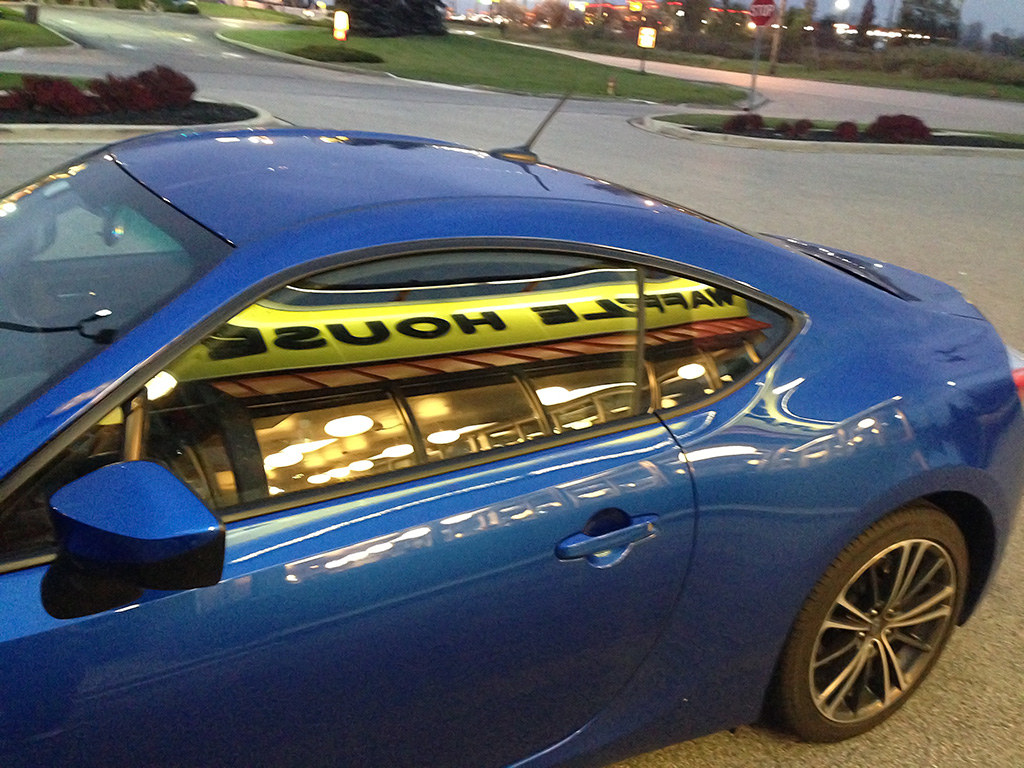“Laws of nature are human inventions, like ghosts. Law of logic, of mathematics are also human inventions, like ghosts.
…we see what we see because these ghosts show it to us, ghosts of Moses and Christ and the Buddha, and Plato, and Descartes, and Rousseau and Jefferson and Lincoln, on and on and on. Isaac Newton is a very good ghost. One of the best. Your common sense is nothing more than the voices of thousands and thousands of these ghosts from the past..”
–Robert M. Pirsig, Zen and the Art of Motorcycle Maintenance
Color Science and Making a Car the Desired Color
Color science is based on understanding the three components that result in the perception of color. These include the study of light sources and illumination (physics), the properties of materials and how they interact with light (chemistry and physics), and the detection and perception of that light by human observers (anatomy, physiology, and psychology). The process of formulating an automative coating to match the color of a specific object touches on all three of these components. The measurement of color, referred to as colorimetry, is based on the physical measurement of the production of light by the illumination source and the interaction of that light with objects. The measurements are the amount of light produced by the source at each wavelength in the visible spectrum (spectroradiometry) and then the percent of that light reflected by the paint at each wavelength (spectrophotometry). With those measurements in hand, one can compute the amount of light at each wavelength reaching the observer’s eyes and use mathematical models of the human visual response to compute the color sensation and perception. These computations can be boiled down to the amounts of various primary stimuli (pigments in the case of paints) needed to match a color or a description of its color appearance in terms such as hue, lightness, and saturation. Given these measurements and descriptions of the object that a customer wants to be matched, the next step is figuring out how to make the appropriate automotive coating.

Spectral and Conditional Matches
There are two possible methods of creating a color match to a measured object. The first is to attempt to match the proportion of light reflected at each wavelength in the visible spectrum. This is considered a perfect match and is not often possible since it typically requires that the original object and matching material are made of the same materials. Since the visual response to light is not to each individual wavelength, but integrated into the three dimensions of hue, lightness, and saturation, it is possible to make color matches across different materials. (For example, this is how a color television reproduces a wide range of colors with just its three, red, green, and blue, primary lights.) Such matches are called conditional, or metameric. They are conditional because the quality of the match can depend on the particular illumination or observer.
Making the Desired Color
Given a measured object to match, the next step is to examine the materials available to produce the coating. This is done by evaluating different concentrations of available pigments and substrates in terms of the amount of light they absorb and scatter at each wavelength. This information is used along with a computational theory (typically Kubelka-Munk theory or its derivatives) to predict which pigments and in what amounts need to be combined to match the object. Typically these computed matches are conditional matches and thus not perfect for every observer or every illumination condition. Despite these fundamental limitations, excellent results can be obtained with modern technology and pigments.
As might be expected, automobiles present added complexities beyond just matching the color of an object. These include issues that are broadly lumped under the concept of total appearance and include features such as glossiness of the surface and effects coatings that vary in color with illumination and view angle (i.e. metallic and pearlescent finishes). The main approach is to do above analyses and modeling for multiple angles of illumination and measurement. This gets quite complex and difficult, especially if you want to match across different materials (e.g., Touching up your Porsche with metallic paint is much easier than making a metallic paint match a non-metallic object.) and provides another fundamental limitation in the ultimate accuracy of matching various objects.
Sum
In summary, color science makes it possible to create a custom-colored automobile, but also tells us that there are physical limitations to making perfect matches that hold all the time. Also note that all of the above applies to the non-painted parts of the automobile as well, interior and exterior, and even to the signal lights and dashboard displays. (This post is a draft of an article insert prepared for a colleague for the local Porsche club newsletter.)’
Next up; ???